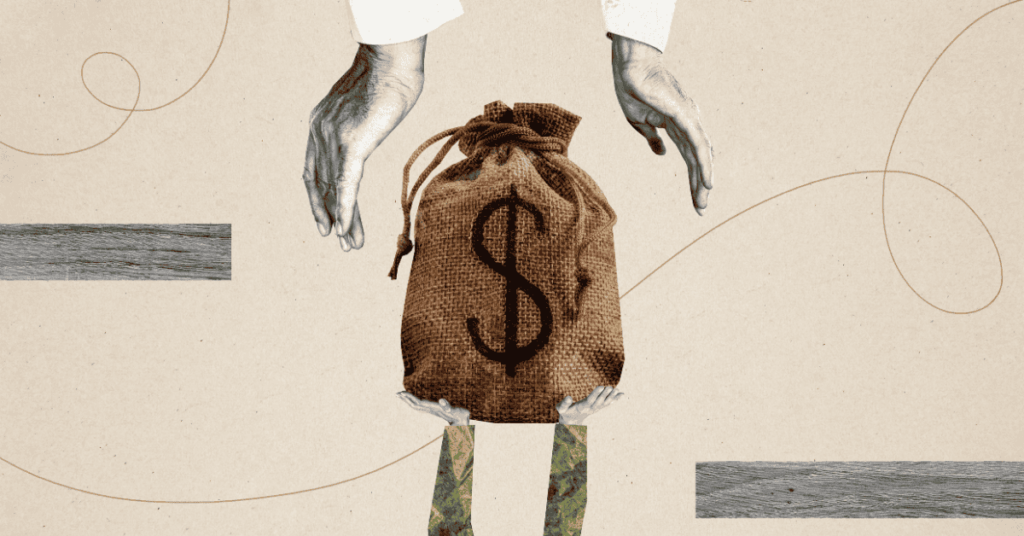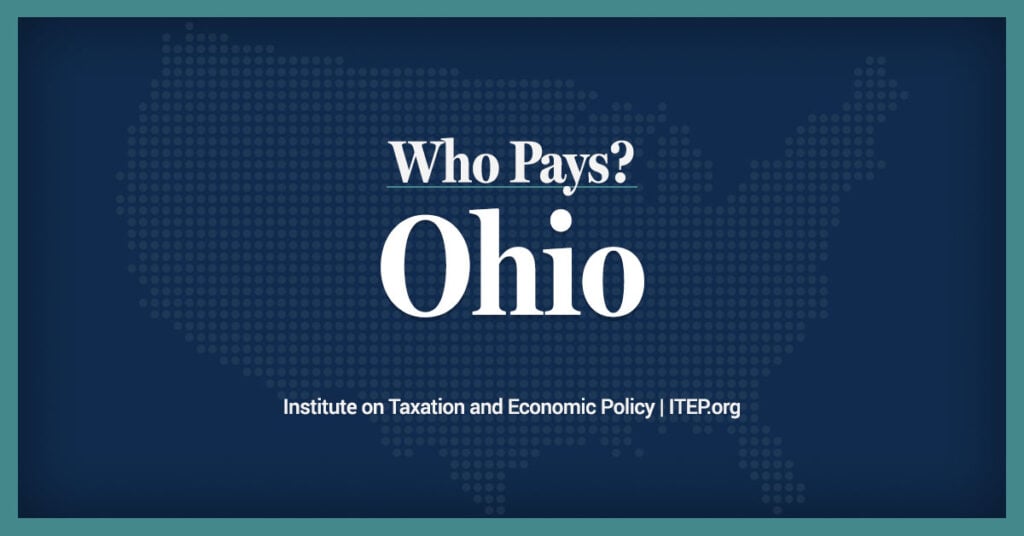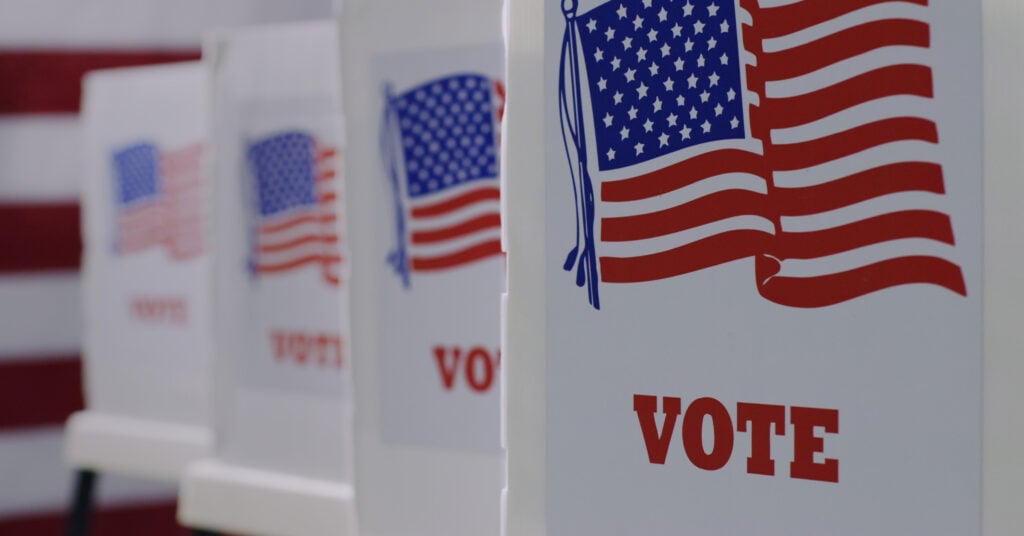(Original Post)
By Jim Siegel
The Columbus Dispatch Wednesday June 26, 2013 8:58 AM
A new analysis yesterday added fuel to criticism of a new tax plan that would decrease Ohioans’ income tax but increase the state sales and commercial activities taxes.
A study for Policy Matters Ohio by the Institute on Taxation and Economic Policy found that middle-class Ohioans, who made between $33,000 and $51,000 last year, would get a net annual tax cut of $5 if the plan as proposed is implemented. The bottom 40 percent of Ohioans, whose annual income is below $33,000, would see a net tax increase averaging $24 a year, the labor-backed group said.
The labor-backed group said that Ohio residents who make the top 1 percent of income, at least $335,000 in 2012, would reap an average annual tax cut of $6,083, the group said.
The analysis was based on the plan proposed last week. Some changes to the tax package approved yesterday could have some impact on low-income Ohioans, such as keeping the $20 personal credit for those earning less than $30,000.
“This is a balanced package that will help project this state to the forefront of telling businesses to come do business in Ohio,” said Sen. Scott Oelslager, R-Canton.
Rep. Mike Foley, D-Cleveland, called it a regressive tax package that puts more burden on lower-income Ohioans “to the benefit of those who are more wealthy in the state.”
The House and Senate will take final votes this week on the new two-year budget, which includes the package of tax changes that supporters say will net a $2.7 billion tax cut over the next two years.A look at the main components of the tax package:
INCOME TAXES — EVERYONE
Ohio has nine income-tax brackets, ranging from 0.6 percent for annual income under $5,200 to 5.9 percent for income earned beyond $208,500.
• How it works: Reduces all income-tax brackets by 8.5 percent this year, then 9 percent next year and 10 percent in 2015 and beyond. A 10 percent cut would bring the top rate to 5.3 percent. (Currently Ohioans earning up to $85,000 pay an effective rate of 3.4 percent or less.) Temporarily freezes tax brackets and personal exemptions so they no longer rise with inflation. Puts in place a nonrefundable earned-income tax credit.
• The impact: Across-the-board cut totals $968 million in 2015. Once fully phased in at 10 percent, most Ohioans would see a cut ranging from $30 to $300 — the more a person earns, the bigger the cut. Those making between $22,000 and $44,000 would see an average cut of $79, while those making $88,000 to $110,000 would average $383. Freezing the tax brackets and exemptions would cost taxpayers $124 million in 2015.
• Why it’s being done: Supporters say lower income-tax rates help make Ohio competitive with other states for attracting jobs and put more money in people’s pockets.
• Concerns raised: The cuts would benefit wealthier Ohioans — who also pay more in income taxes — much more than the poor and middle-class. Cuts would eliminate revenue, including more than $1.3 billion from the two-year budget that begins July 1, 2015, at a time when schools, local governments and human services are still recovering from recent budget cuts. The 21 percent income-tax cut phased in starting in 2005 did not produce robust job growth.
INCOME TAXES — BUSINESS
For business owners who operate as pass-through entities, profits are their income, which is taxed as other income in Ohio.
• How it works: Provides a 50 percent tax deduction on up to $250,000 worth of business income.
• The impact: Business owners would save up to a maximum $7,000 a year in income-tax payments. Data show that nine in 10 people who claim business income would save less than $1,000 a year. Total savings for owners would be $1.1 billion over two years.
• Why it’s being done: Small businesses are key to job growth in Ohio; the tax cut would provide extra money for those owners to hire, expand or upgrade equipment.
• Concerns raised: The tax is poorly targeted because about 80 percent of business owners employ no one beyond themselves, and most have little interest in doing so. The amount of the tax cut — most would get less than $400 — isn’t enough to help businesses hire, expand or make major purchases. The tax cut doesn’t require that business owners spend the money on their companies.
COMMERCIAL ACTIVITIES TAX
Businesses pay a 0.26 percent tax on gross receipts. Currently, there is an exemption for the first $150,000 in gross receipts, and businesses pay a flat $150 fee on sales between $150,000 and $1 million.
• How it works: No longer provides a $2,450 credit on the first $1 million in sales for all businesses.
• The impact: For businesses with sales under $1 million, there is no change. Those with gross receipts between $1 million and $2 million pay an extra $650 more; it’s $1,950 more for those between $2 million and $4 million, and $2,450 more for those over $4 million. Total of $174 million in new revenue over two years.
• Why it’s being done: Raises money to help pay for the income-tax cut.
• Concerns raised: Makes the CAT, a generally simple tax, more complicated.
PROPERTY TAX ROLLBACK
The state pays 12.5 percent of your local property-tax bill. This costs the state about $1.1 billion per year just for schools, which receive most of those taxes. The amount has grown as new levies have been approved.
• How it works: All current levies and those approved in August would not be affected, nor would renewals of current tax levies. But new levies, including replacement levies, would cost homeowners more than they would have under current law because they would pay 100 percent of the levy.
• The impact: For new levies, a homeowner would pay $4.38 per mill for every $100,000 in taxable property value. So a person with a $200,000 home would pay $44 a year more than he would pay under current law for a new 5-mill levy. Total cost for taxpayers: $96 million in fiscal year 2016, the first full year it is implemented.
• Why it’s being done: The cost of the rollback has doubled since 1997. Supporters call it “truth in taxation,” where the property owner pays the full amount, instead of having state taxpayers, some of whom do not own property, pick up part of the tab. Helps pay for the income-tax cuts.
• Concerns raised: Future levies would be harder to pass because they would cost homeowners more. Disproportionately hits farmers.
HOMESTEAD EXEMPTION
Seniors age 65 or older and Ohioans who are permanently disabled qualify for the homestead exemption, shielding $25,000 of the market value of their home from property taxation.
• How it works: Those who are not yet 65 and who earn more than $30,000 no longer would qualify for the homestead exemption. This was the threshold before eligibility was expanded in 2007.
• The impact: An estimated $34 million next year.
• Why it’s being done: Supporters say it takes the program back to its original intent — to help low-income seniors remain in their homes. The state shouldn’t subsidize property taxes for wealthy retirees, supporters say.
• Concerns raised: The threshold is too low, eliminating a number of seniors who struggle financially.
SALES TAX
The state sales tax rate is 5.5 percent.
• How it works: Increases the rate to 5.75 percent, and eliminates exemptions for magazines and digital products such as downloaded books. Also, Ohio would become a full member of the multistate compact in which out-of-state companies volunteer to remit sales taxes on Internet purchases by Ohioans.
• The impact: Every $100 of taxable goods would cost an additional 25 cents. A $25,000 car would cost an additional $62.50. Would cost more for downloaded and online purchases. Tax-rate increase would generate about $420 million next year. Online/digital goods taxes would raise about $40 million per year.
• Why it’s being done: To raise money to help pay for an income-tax cut. Republicans say it is better for the economy to shift from income taxes to consumption taxes. Would eliminate exemptions that put brick-and-mortar retailers at a disadvantage to online businesses.
• Concerns raised: Sales tax is more regressive, so an increase has a greater impact on the poor and middle class.
By Jim Siegel
The Columbus Dispatch Wednesday June 26, 2013 8:58 AM
A new analysis yesterday added fuel to criticism of a new tax plan that would decrease Ohioans’ income tax but increase the state sales and commercial activities taxes.
A study for Policy Matters Ohio by the Institute on Taxation and Economic Policy found that middle-class Ohioans, who made between $33,000 and $51,000 last year, would get a net annual tax cut of $5 if the plan as proposed is implemented. The bottom 40 percent of Ohioans, whose annual income is below $33,000, would see a net tax increase averaging $24 a year, the labor-backed group said.
The labor-backed group said that Ohio residents who make the top 1 percent of income, at least $335,000 in 2012, would reap an average annual tax cut of $6,083, the group said.
The analysis was based on the plan proposed last week. Some changes to the tax package approved yesterday could have some impact on low-income Ohioans, such as keeping the $20 personal credit for those earning less than $30,000.
“This is a balanced package that will help project this state to the forefront of telling businesses to come do business in Ohio,” said Sen. Scott Oelslager, R-Canton.
Rep. Mike Foley, D-Cleveland, called it a regressive tax package that puts more burden on lower-income Ohioans “to the benefit of those who are more wealthy in the state.”
The House and Senate will take final votes this week on the new two-year budget, which includes the package of tax changes that supporters say will net a $2.7 billion tax cut over the next two years.A look at the main components of the tax package:
INCOME TAXES — EVERYONE
Ohio has nine income-tax brackets, ranging from 0.6 percent for annual income under $5,200 to 5.9 percent for income earned beyond $208,500.
• How it works: Reduces all income-tax brackets by 8.5 percent this year, then 9 percent next year and 10 percent in 2015 and beyond. A 10 percent cut would bring the top rate to 5.3 percent. (Currently Ohioans earning up to $85,000 pay an effective rate of 3.4 percent or less.) Temporarily freezes tax brackets and personal exemptions so they no longer rise with inflation. Puts in place a nonrefundable earned-income tax credit.
• The impact: Across-the-board cut totals $968 million in 2015. Once fully phased in at 10 percent, most Ohioans would see a cut ranging from $30 to $300 — the more a person earns, the bigger the cut. Those making between $22,000 and $44,000 would see an average cut of $79, while those making $88,000 to $110,000 would average $383. Freezing the tax brackets and exemptions would cost taxpayers $124 million in 2015.
• Why it’s being done: Supporters say lower income-tax rates help make Ohio competitive with other states for attracting jobs and put more money in people’s pockets.
• Concerns raised: The cuts would benefit wealthier Ohioans — who also pay more in income taxes — much more than the poor and middle-class. Cuts would eliminate revenue, including more than $1.3 billion from the two-year budget that begins July 1, 2015, at a time when schools, local governments and human services are still recovering from recent budget cuts. The 21 percent income-tax cut phased in starting in 2005 did not produce robust job growth.
INCOME TAXES — BUSINESS
For business owners who operate as pass-through entities, profits are their income, which is taxed as other income in Ohio.
• How it works: Provides a 50 percent tax deduction on up to $250,000 worth of business income.
• The impact: Business owners would save up to a maximum $7,000 a year in income-tax payments. Data show that nine in 10 people who claim business income would save less than $1,000 a year. Total savings for owners would be $1.1 billion over two years.
• Why it’s being done: Small businesses are key to job growth in Ohio; the tax cut would provide extra money for those owners to hire, expand or upgrade equipment.
• Concerns raised: The tax is poorly targeted because about 80 percent of business owners employ no one beyond themselves, and most have little interest in doing so. The amount of the tax cut — most would get less than $400 — isn’t enough to help businesses hire, expand or make major purchases. The tax cut doesn’t require that business owners spend the money on their companies.
COMMERCIAL ACTIVITIES TAX
Businesses pay a 0.26 percent tax on gross receipts. Currently, there is an exemption for the first $150,000 in gross receipts, and businesses pay a flat $150 fee on sales between $150,000 and $1 million.
• How it works: No longer provides a $2,450 credit on the first $1 million in sales for all businesses.
• The impact: For businesses with sales under $1 million, there is no change. Those with gross receipts between $1 million and $2 million pay an extra $650 more; it’s $1,950 more for those between $2 million and $4 million, and $2,450 more for those over $4 million. Total of $174 million in new revenue over two years.
• Why it’s being done: Raises money to help pay for the income-tax cut.
• Concerns raised: Makes the CAT, a generally simple tax, more complicated.
PROPERTY TAX ROLLBACK
The state pays 12.5 percent of your local property-tax bill. This costs the state about $1.1 billion per year just for schools, which receive most of those taxes. The amount has grown as new levies have been approved.
• How it works: All current levies and those approved in August would not be affected, nor would renewals of current tax levies. But new levies, including replacement levies, would cost homeowners more than they would have under current law because they would pay 100 percent of the levy.
• The impact: For new levies, a homeowner would pay $4.38 per mill for every $100,000 in taxable property value. So a person with a $200,000 home would pay $44 a year more than he would pay under current law for a new 5-mill levy. Total cost for taxpayers: $96 million in fiscal year 2016, the first full year it is implemented.
• Why it’s being done: The cost of the rollback has doubled since 1997. Supporters call it “truth in taxation,” where the property owner pays the full amount, instead of having state taxpayers, some of whom do not own property, pick up part of the tab. Helps pay for the income-tax cuts.
• Concerns raised: Future levies would be harder to pass because they would cost homeowners more. Disproportionately hits farmers.
HOMESTEAD EXEMPTION
Seniors age 65 or older and Ohioans who are permanently disabled qualify for the homestead exemption, shielding $25,000 of the market value of their home from property taxation.
• How it works: Those who are not yet 65 and who earn more than $30,000 no longer would qualify for the homestead exemption. This was the threshold before eligibility was expanded in 2007.
• The impact: An estimated $34 million next year.
• Why it’s being done: Supporters say it takes the program back to its original intent — to help low-income seniors remain in their homes. The state shouldn’t subsidize property taxes for wealthy retirees, supporters say.
• Concerns raised: The threshold is too low, eliminating a number of seniors who struggle financially.
SALES TAX
The state sales tax rate is 5.5 percent.
• How it works: Increases the rate to 5.75 percent, and eliminates exemptions for magazines and digital products such as downloaded books. Also, Ohio would become a full member of the multistate compact in which out-of-state companies volunteer to remit sales taxes on Internet purchases by Ohioans.
• The impact: Every $100 of taxable goods would cost an additional 25 cents. A $25,000 car would cost an additional $62.50. Would cost more for downloaded and online purchases. Tax-rate increase would generate about $420 million next year. Online/digital goods taxes would raise about $40 million per year.
• Why it’s being done: To raise money to help pay for an income-tax cut. Republicans say it is better for the economy to shift from income taxes to consumption taxes. Would eliminate exemptions that put brick-and-mortar retailers at a disadvantage to online businesses.
• Concerns raised: Sales tax is more regressive, so an increase has a greater impact on the poor and middle class.





